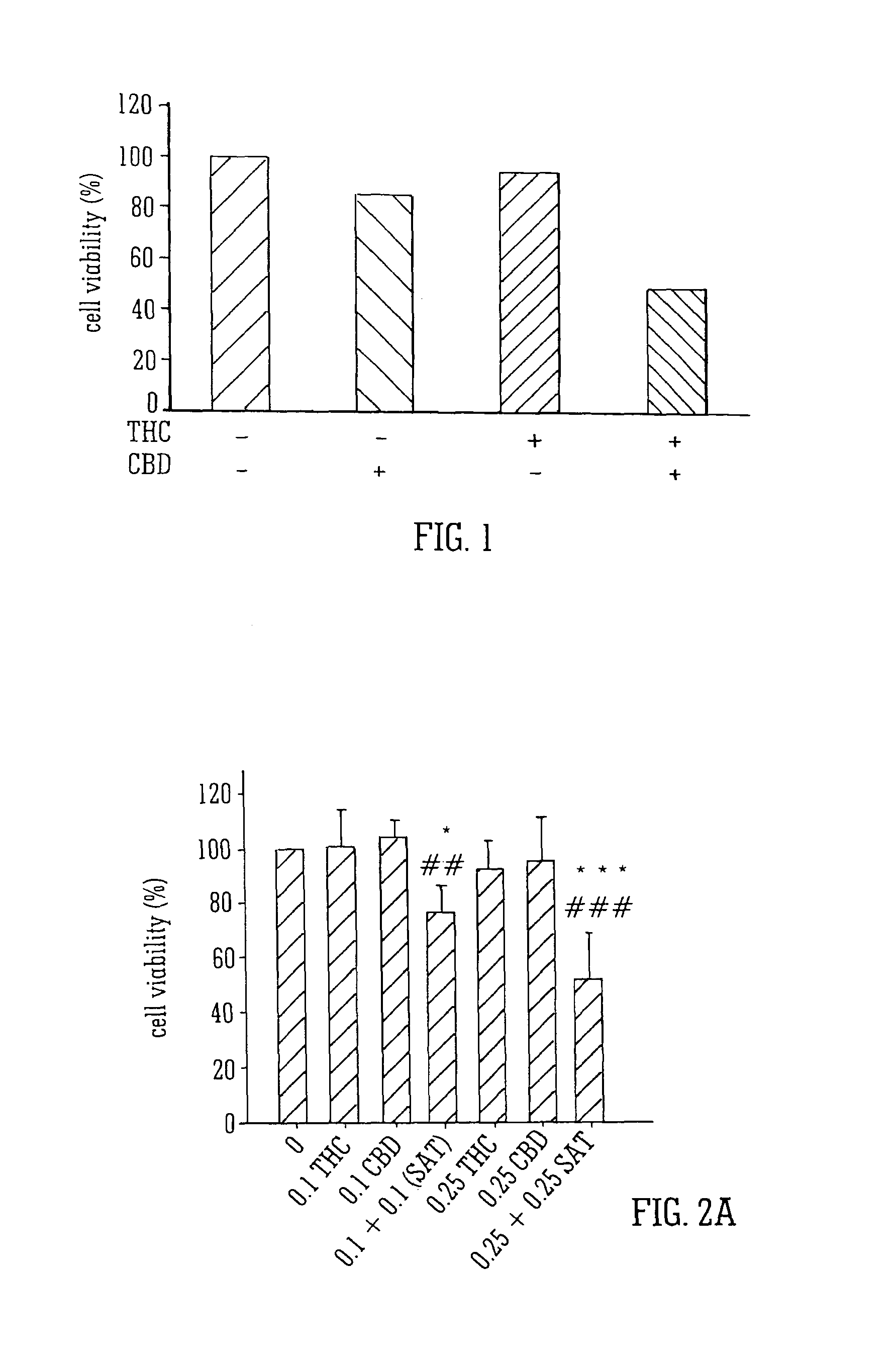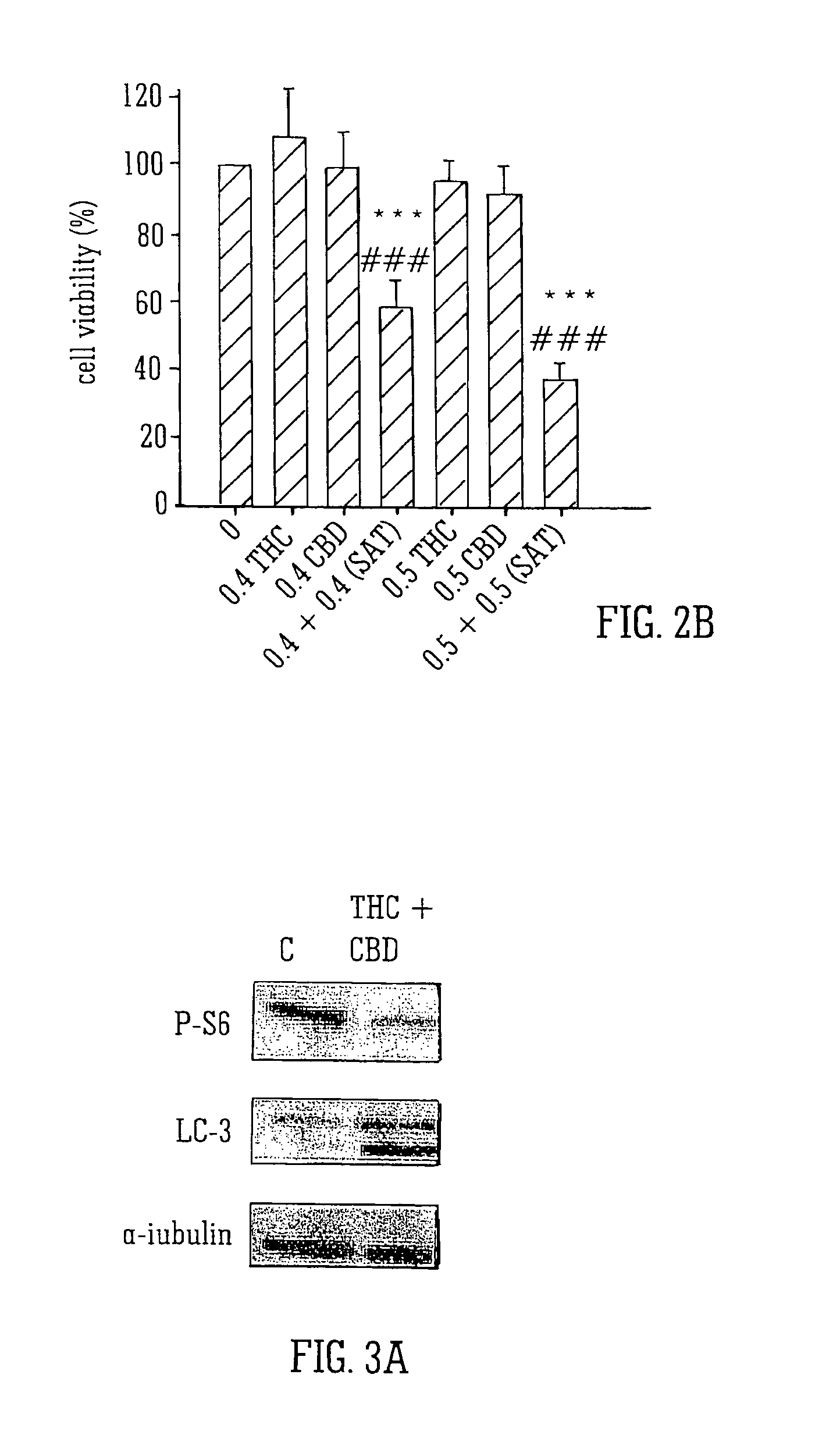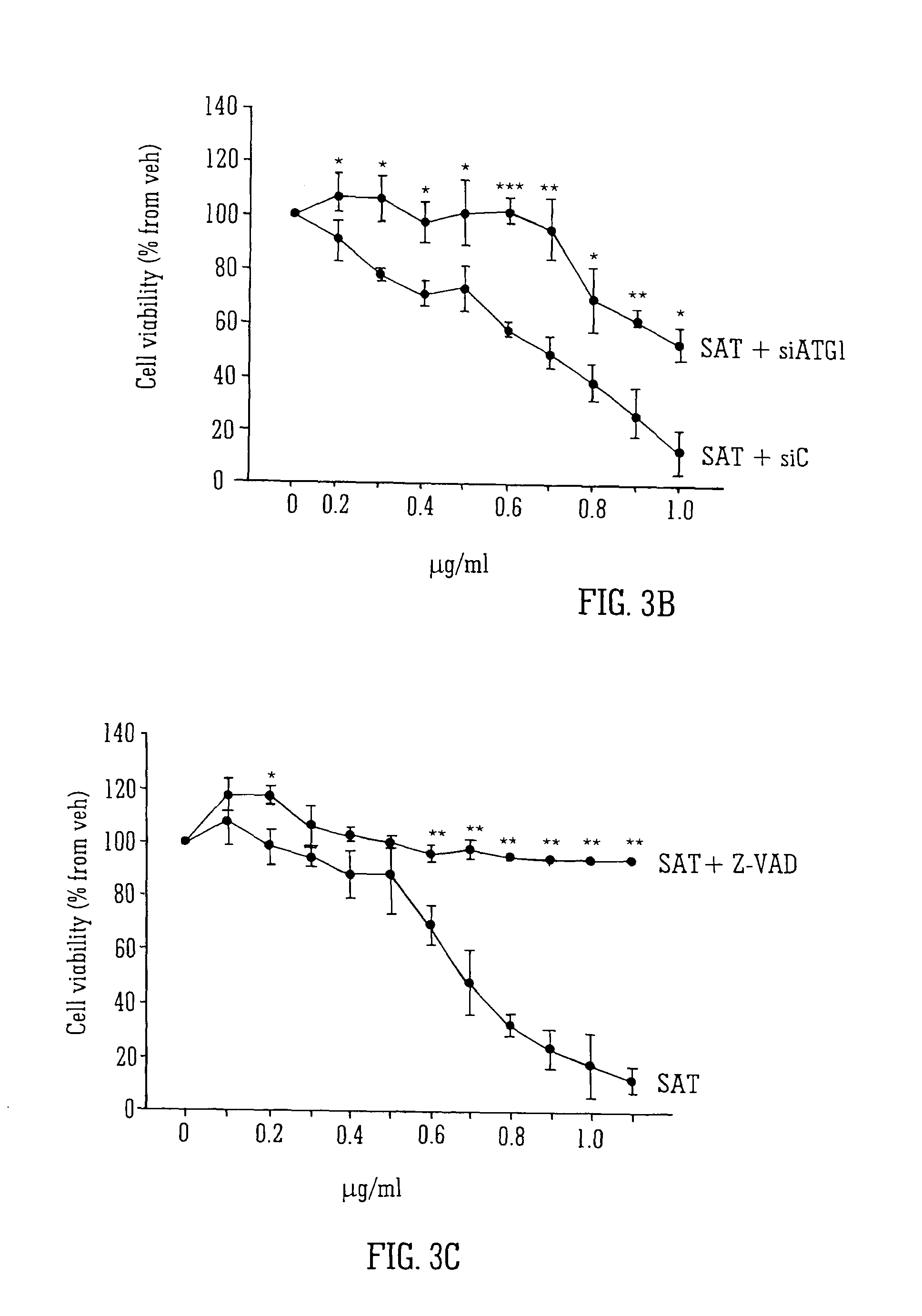Anti-tumoural effects of cannabinoid combinations
a cannabinoid and anti-tumour technology, applied in the direction of biocide, plant/algae/fungi/lichens, drug compositions, etc., can solve the problems of limiting the normal functions of those cells, and limiting the effectiveness of chemotherapy
- Summary
- Abstract
- Description
- Claims
- Application Information
AI Technical Summary
Benefits of technology
Problems solved by technology
Method used
Image
Examples
example 2
The Effect of a Combination of THC and CBD Extracts at Inhibiting Cancer Cell Growth In Vitro
[0056]This experiment tested whether a combination of THC and CBD extracts were as effective at inhibiting cell growth as the extracts alone.
[0057]The methods used were as described in Example 1 above.
Results:
[0058]FIG. 1 details a bar chart describing the cell viability of human U87 MG astrocytoma cells versus the THC and CBD extracts alone and in combination with one another.
[0059]As can be seen when the THC and CBD are used in combination the cell viability is significantly reduced in comparison to the cell viability after treatment with either THC or CBD alone.
[0060]This data suggests that the cannabinoids THC and CBD would be more effective in the treatment of tumours when used in combination.
example 3
The Effect of a Combination of THC and CBD at Inhibiting Cancer Cell Growth In Vivo
[0061]This experiment tested whether the combination of THC and CBD extracts were also effective in vivo.
[0062]Human U87 MG astrocytoma cells were xenografted to nude mice and the test compounds were injected peritumourally at a concentration of 15 mg / kg per day.
Results:
[0063]
TABLE 2Tumour volume relative to zero time following 15 days of treatmentTumour volumeVehicle9.2 ± 0.6Pure THC5.1 ± 0.4THC extract6.6 ± 0.3THC:CBD (1:1) extract4.8 ± 0.3
[0064]As can be observed in Table 2 above the tumour volume after treatment with the 1:1 combination of THC and CBD extracts is significantly superior to the treatment with either the pure THC or the THC extract alone.
[0065]This data suggests that the cannabinoids THC and CBD would be more effective in the treatment of tumours when used in combination.
example 4
Effect of Cannabinoid Concentration on Cell Viability in Two Different Cell Lines
[0066]The action of THC, CBD, and a 1:1 ratio mix of THC and CBD were studied at different concentrations on two cell lines: U87MG and T98G. The cell viability data is illustrated in FIGS. 2a and 2b.
[0067]Referring to FIG. 2a it will be seen that ineffective / sub-optimal doses of THC and CBD at 0.1 ug / ml and 0.25 ug / ml (greater than 90% cell viability) gave way to a statistically significant decrease in cell viability in combination (SAT), which data showed a dose dependant relationship with increased concentration (greater cyto-toxicity at 0.25 ug / ml).
[0068]Similar results were obtained with cell line T98G, (an alternative human glioma cell line) as is shown in FIG. 2b.
PUM
| Property | Measurement | Unit |
|---|---|---|
| concentration | aaaaa | aaaaa |
| volume | aaaaa | aaaaa |
| adhesion | aaaaa | aaaaa |
Abstract
Description
Claims
Application Information
 Login to View More
Login to View More - R&D
- Intellectual Property
- Life Sciences
- Materials
- Tech Scout
- Unparalleled Data Quality
- Higher Quality Content
- 60% Fewer Hallucinations
Browse by: Latest US Patents, China's latest patents, Technical Efficacy Thesaurus, Application Domain, Technology Topic, Popular Technical Reports.
© 2025 PatSnap. All rights reserved.Legal|Privacy policy|Modern Slavery Act Transparency Statement|Sitemap|About US| Contact US: help@patsnap.com



